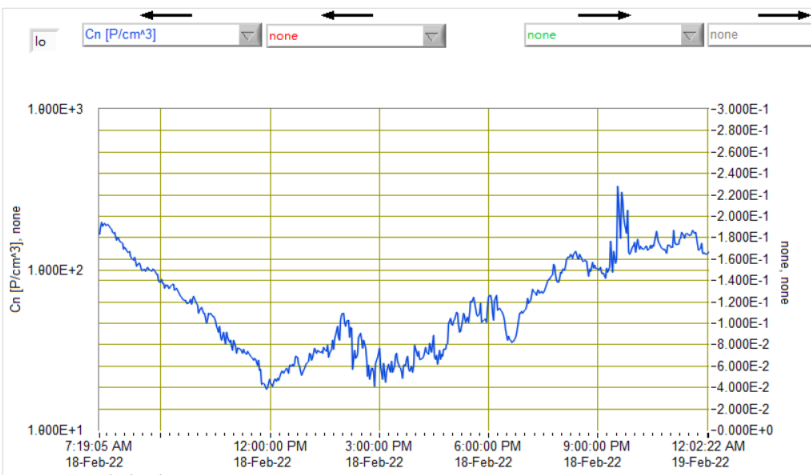With the rapid development of science and technology, nanomaterials have been widely used in microelectronics, chemical industry, energy, environment and other fields. However, due to the small size of nanoparticles, if they enter the respiratory tract, it will affect people’s health. This increases the potential for occupational exposure, especially for workers engaged in the production and use of nanomaterials. In this regard, Palas® provides solutions for ultrafine particles in the workplace, providing technical support for monitoring nanoscale particles. UF-CPC 100 condensation particle counter using condensation particle technology. It brings stable monitoring data results and a wide particle size monitoring range to the nano-scale monitoring field.

Wide monitoring range for ultrafine particles
Nanomaterials refer to particulate-like materials in nanoscale size, with a size smaller than 100 nm in at least one dimension. These materials have the characteristics of strong adsorption capacity and high catalytic activity. During the production and use of nanomaterials, nanoparticles may be released into the ambient air, with high concentrations and long floating times in the workplace. Long-term exposure to ultrafine particles may lead to potential health hazards and induce clinical symptoms in exposed individuals.

Palas® monitoring equipment that meets highest standards
Common ways of generating ultrafine particles in the workplace are:
Caused by heating, such as metal smelting, galvanizing, electric welding, etc.;
Caused by combustion of, for example, diesel, gasoline, gas combustion engines;
By machining, high-speed metal grinding and machining and high-speed drilling;
In particular, nanomaterials manufacturing, nanomaterial production (nanoparticle powder), nanoparticle powder handling and use, nanoparticle suspension or liquid spraying, etc.
Increases the possibility of occupational exposure of exposed persons. Currently, the number of occupationally exposed persons in China is increasing and the types of exposure are complex. Awareness of occupational health and safety protection is weak. For this reason, China’s new national occupational health standard requires that the particle size monitoring of the device should be in the range of 20 nm to 3000 nm. The Palas® UF-CPC 100 meets the particle size range monitoring standards and helps monitor ultrafine particles from a variety of common production chanels.

Palas® Condensation Particle Counter – principle of operation
The condensation particle counter (CPC) is an instrument that can count and measure small-sized aerosol particles. The working principle is that the saturated steam condenses on the ultrafine particles, so that the particle size of the droplets grows to an optically detectable size. Three available UF-CPC models enable particle counting in a wide range of concentrations.

Principle of operation of the Palas® condensation particle counter (UF-CPC)
The UF-CPC series operates using a touch screen graphical user interface for particle size measurements ranging from 4nm to 10,000 nm. The sensor on the UF-CPC uses a patented technology to count particles at concentrations of up to 107 P/cm3 without diluting the aerosol. The integrated data logger allows linear and logarithmic display of measured values on the device. The included evaluation software provides various data evaluations (rich statistics and mean calculation) as well as export functions.

The ratio of the number of particles of each particle size to the total number of particles

Data list can be exported
UF-CPC 100

Advantages:
· The UF-CPC is able to count up to 2,000,000 particles/cm3 in single count mode, depending on the sensor in use (able to be switched out by the user).
· Integrated computer with 7” touch screen
· Intuitive user interface with sophisticated software for data analysis
· Integrated data logger
· Unlimited network compatibility that supports remote control and data storage on the Internet
· Integrated interface for process control applications
Applications
· Aerosol research
· Testing of filters and air purifiers
· Environmental measurements
· Workplace exposure and occupational safety studies
· Studies concerning inhalation and health impacts
· Process control
· Printer emission studies
Palas® China will arrange a series of online webinars both in English and Chinese for Ambient air quality continuous monitoring system, Palas® SMPS scanning mobility particle sizer, Palas® Promo® & Aerosol Generator & Dilution system, ISO 16890 filter media tester, Palas® MFP 3000 G, ISO 29463-3 filter media tester, Palas® MFP Nano plus 4000, ISO 17536 Fractional filtration efficiency tester of Oil Mist Separator, Palas® HMT 1000, as well as Particle Distribution Measurement Devices Introduction – Optical Scattering Method and many other solutions. If interested in the webinars for our products, you are more than welcome to register on our official website and get the latest webinar plan!
